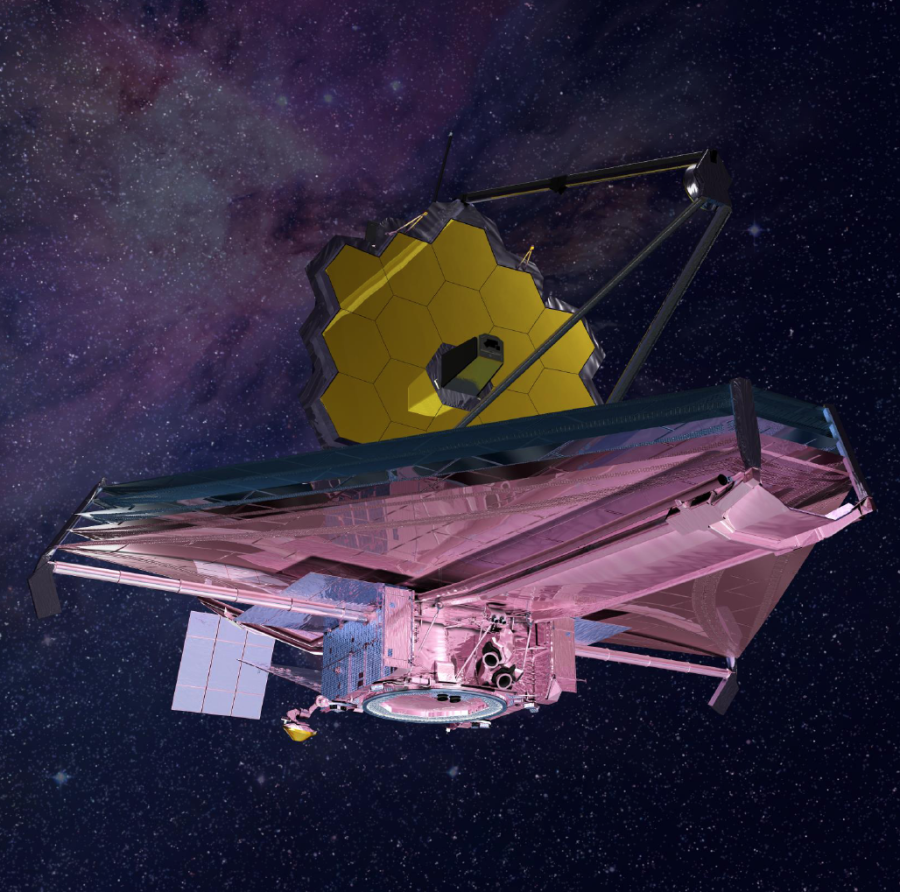The James Webb Space Telescope soars through space
Launched in late 2021, NASA’s James Webb Space Telescope is on a mission to learn more about how early galaxies were born and evolved.
The James Webb Space Telescope (JWST), the more modernized version of the famous Hubble Space Telescope, is making history with its innovative design and ambitious goal to learn more about the birth of the first galaxies. On March 17, the telescope captured its first image, a photo of a star named HD84406. Although the star itself is rather unexceptional, the JWST also captured a scatter of small dots in the background. These small dots are distant galaxies and the JWST is the first telescope that has been able to capture such images.
The $10 billion telescope, launched on December 25, 2021, is on a mission to locate and examine the earliest stars known, with the end goals of determining how galaxies form and evolve, observing the formation of stars, and noting the chemical and physical components of solar systems. The telescope takes advantage of infrared light (heat energy) from the Sun, which is why aluminum covers each layer of the machine and treated silicon lines the layers that are exposed to the most heat. This makes up the five-layer, tennis-court-sized sunshield that reflects the Sun’s heat away from the telescope and prevents the cameras and technology inside from being damaged by the high temperatures. The JWST also features a folding mirror that has a size of 6.5 meters across.
Unlike the Hubble Space Telescope, the JWST orbits the Sun, not the Earth. It took roughly 30 days to reach its destination 1 million miles away from the Earth. Its unique orbit path allows the telescope to stay in line with our planet as they both circle the Sun.
NASA plans to keep the JWST in orbit for the next 5 to 10 years. It is the collaboration of NASA, The European Space Agency, and The Canadian Space Agency.
The instrument is still cooling and is in the process of aligning its mirrors to take in light. On March 16, NASA announced that every part of the JWST’s Optical Telescope Element is working at or above their expectations.


